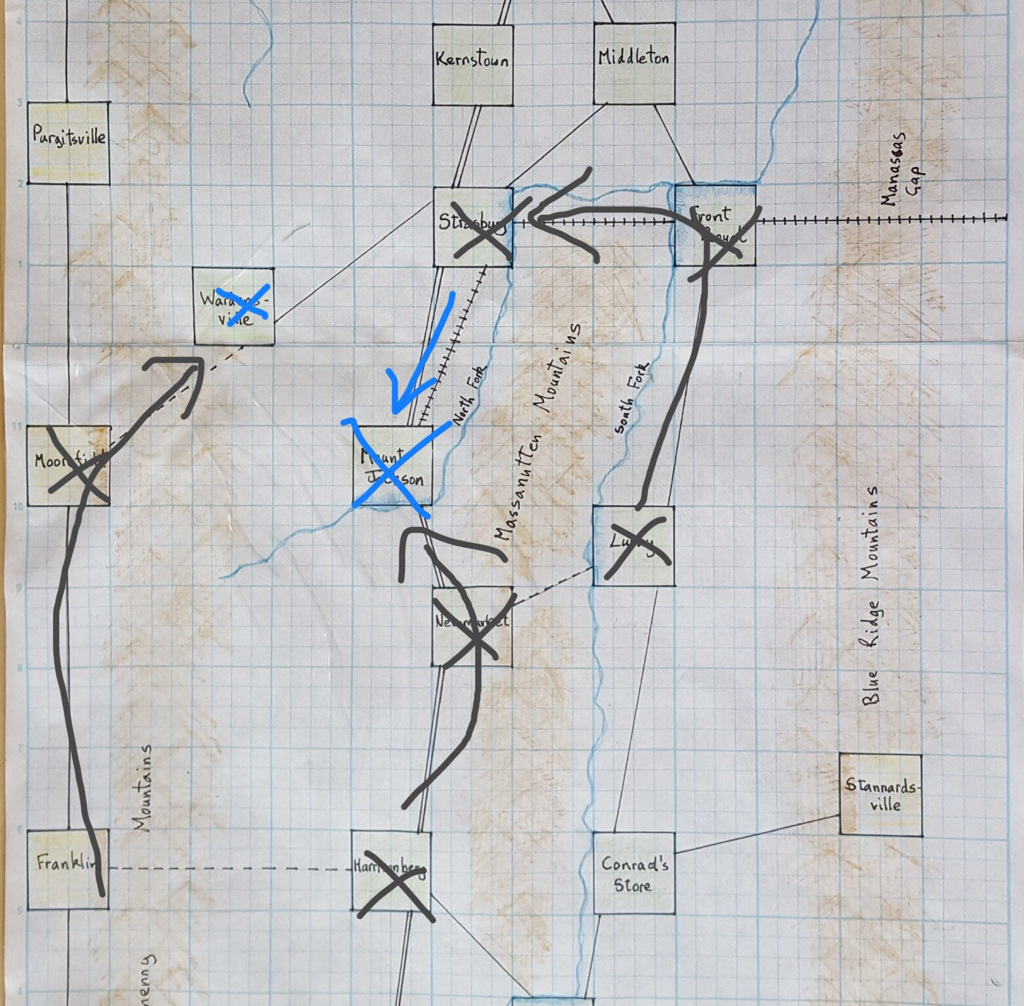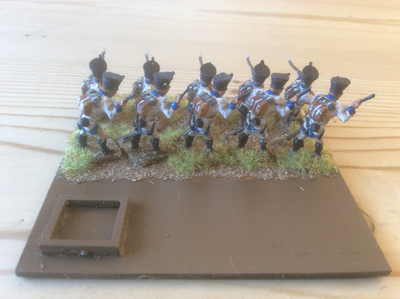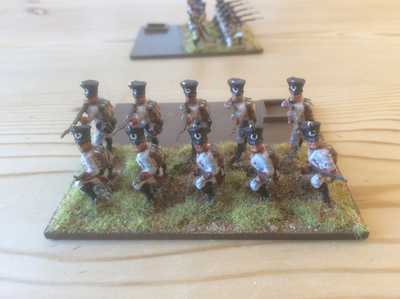|
Getting the figures together Three years after we replayed Waterloo using Honour Games’ Blücher, I will be hosting a multiplayer refight of Ligny later in August. I have started organising the units, which has been nice and straightforward using the 100 Days unit cards. The figures are soft plastics from Airfix, Revell, Italieri, Esci, Zvezda and Hät. Some of them are 40 years old or more, since my friend Keith presented me with his boyhood Airfix Waterloo collection. My original plan at the start of the 1815 project had been to make a separate figure base for every Brigade in the campaign. To be able to refight Ligny, this would have required me to paint up the Prussian III Corps and French III and IV Corps in their entirety. That makes a lot of work and I don’t have that much time to prepare. Also, while there might be satisfaction in completing the whole Orbat, when would I actually play using every unit that took part in the campaign? So I decided to recycle some existing units. First I decided to relabel the French II Corps to cover most of the 3rd and 4th Corps, since one habit veste is pretty much like another. For the Prussians I already had II Corps from the Waterloo game, along with a few I Corps units. If I repurpose my IV Corps units I can make most of III Corps and a fair chunk of I Corps. However. Ever since I bought David Nash’s Prussian Army 1808-15, published by Almark, back in about 1970, I have loved the varied uniforms of the post-1812 army. I am proud of the fact that every Prussian unit painted to date has the right uniform for the regiment represented. Could I bring myself to relabel Silesian Landwehr as Westphalian, without overpainting the facing colour? Who besides me would notice, still less care if the uniforms didn’t fit? As it turns out, I realised I couldn’t do it. Even if others didn’t notice, I would know that the Prussian uniforms are wrong. I have therefore started a programme of repainting, adapting and adding to my Prussian collection so that every unit is properly dressed. And there are some great uniforms to recreate. I started with the 28th and 29th Line in I Corps, who until 1814 had been regiments in the Duchy of Berg and still wore their white Rhine Confederation uniforms. I used some of the old Airfix French that Keith had passed on. Next comes the 30th and 31st regiments in III Corps, which had previously formed the Russo German Legion and wore Russian uniform. I have ordered a box of Zvezda Russian infantry to cover these units. For the rest, I am repainting facing colours where this is easy and painting more demanding colour combinations from scratch. I also need to add more Prussian horse so have painted the West Prussian Dragoons and am about to start some Landwehr lancers. If this sounds like amazing dedication, bear in mind that I represent foot units with only 8 to 10 figures and cavalry with 4 or 5 horsemen. So I can complete a unit in an evening as long as I don’t have distractions. The clock is ticking however and I can’t afford to slack. Source Materials Meanwhile, I am thinking about aspects for inclusion in the scenario. There are two main what-ifs: D’Erlon’s I Corps movements and the arrival of Lobau’s VI Corps. D’Erlon barely contributed to the day because of countermanded orders, while Lobau only arrived from Charleroi as the battle ended. Both could have arrived earlier and contributed to the action. To help decide what, if anything, I do about these absent formations, I have been rereading Colonel Charles Chesney’s Waterloo Lectures, first published in 1868 and reprinted in the 1990s by Greenhill. Chesney is fascinating. His book is not a conventional narrative history of the campaign and in fact he presumes the reader already knows the main events. Chesney’s purpose is to analyse the various myths and assertions about the battle that were already manifold by the mid 19th century. His main target are those historians who placed blame for the French defeat on everybody else but Napoleon. It is striking how much of the mythology is still current, including in some modern histories of the campaign, not to mention in the entertaining hogwash that is De Laurentis’ film of Waterloo. I suppose two world wars didn’t help the British to give due credit to Blücher and his army, or indeed the Germans under Wellington’s command, for their contribution to victory. In this Chesney is scrupulous: he stresses the immense achievements of the German-speaking troops and places Wellington’s personal relationship with Blücher at the heart of the success. He also argues persuasively that neither Ney nor Grouchy were to blame for the alleged errors of judgement and action that were later used by Napoleon to explain away his defeat. Where is D’Erlon?
In the case of Ligny and Quatre Bras, Chesney points out that Napoleon’s order to Ney on the 16th was only to detach a Force towards Ligny once he had taken Quatre Bras with both Corps. It may have been unfortunate that due to countermanded orders D’Erlon was unable in the end to contribute on either field, but Napoleon was not counting on his arrival at Ligny, at least for some hours. Indeed, when the head of D’Erlon’s column first appeared in the distance, Napoleon was surprised to see it and delayed an attack on the Prussians until he found out who it was. Given this interpretation, I am not inclined to make D’Erlon’s arrival a particularly significant factor in the scenario. VI Corps Lobau’s VI Corps spent most of the 16th in reserve a short distance from the Ligny battlefield and came up too late in the day to contribute to the outcome. In his case I think the French should be able to use him if they wish, since he had not been given a competing task for the day. Bülow Another ‘what if’ is whether Bülow’s IV Corps could have been present at Ligny if he had shown more energy or his orders had been clearer. I think the answer is ‘probably not’. He had the furthest to travel from his cantonments and his orders did not tell him to come to Ligny. It seems to me that the only circumstances in which he could have been present on the field would have been if the army had been ordered to concentrate sooner than it actually was. This takes the ‘What If’ so far into alternative events that we could at that point change any number of factors and end up fighting a different battle altogether. Fine if we were to refight the campaign but we will only be looking at the battle of Ligny. So in summary, Bülow is out, Lobau can arrive early and D’Erlon might appear but he also might be recalled and/or arrive late, having stayed with Ney until Quatre Bras was taken. I’ll try to turn these possibilities into a series of dice rolls, to keep our generals guessing. I will be painting hard over the next several days and must then think what we need for the battlefield. There must at least be a windmill for Napoleon’s use....
0 Comments
Leave a Reply. |
Archives
November 2023
Categories
All
|





 RSS Feed
RSS Feed